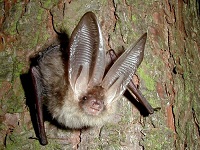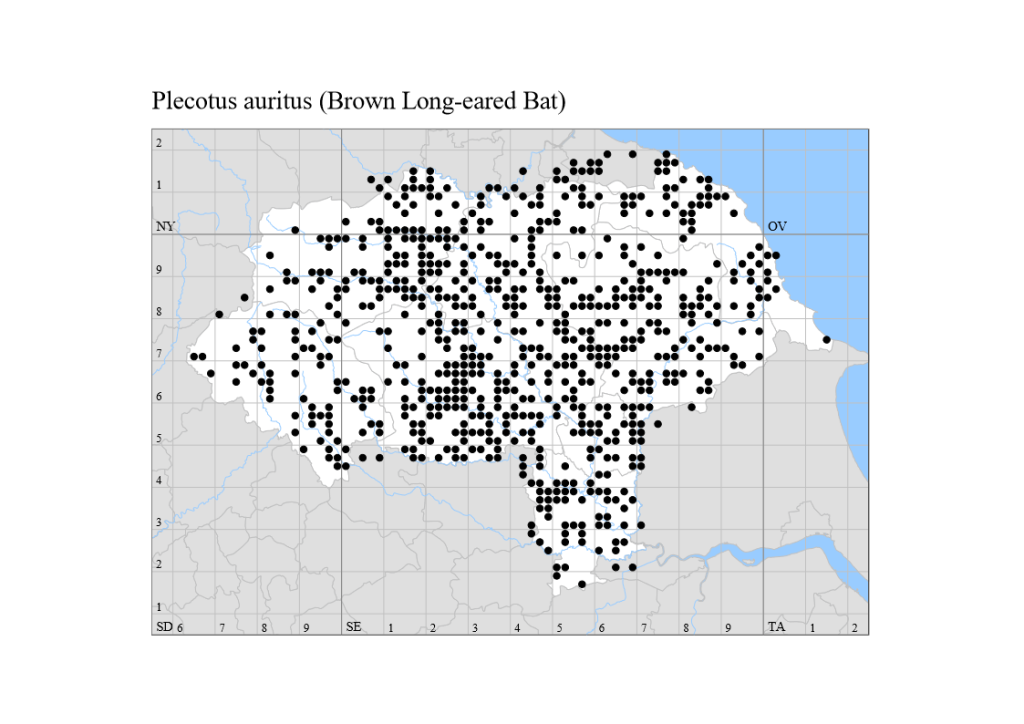
After the Pipistrelles our commonest and most widely distributed species. Brown Long-eared bats are unmistakable close-up with their enormous ears that are almost as long as their body. The animal has the ability to save heat by folding the ears under the wing when at rest and during hibernation leaving just the pointed tragus exposed which can lead to misidentification among those unfamiliar with the species. Unlike Pipistrelles, Brown Long-eared Bats tend to shun light, so are unlikely to be seen around street lights or to roost in buildings in brightly lit locations. Therefore, although widespread, they are mostly a bat of the countryside or the fringes of towns. Their large ears allow then to passively listen for the wing beats or footsteps of their insect prey which are caught and taken back to a favoured perch to be consumed. Thus they are able to feed on those species of moths that can hear echolocation calls and so avoid other bats. Maternity roosts are often in the roof voids of large old stone houses where they will roost alongside the ridge timbers and fly inside before emerging at night. Whilst they will sometimes behave similarly in the old stone barns of Yorkshire, they will also roost in crevices within the walls or along the wall tops, sometimes with a maternity roost scattered throughout the building. Unlike most other bat species male bats are often found in Brown Long-eared maternity roosts.

